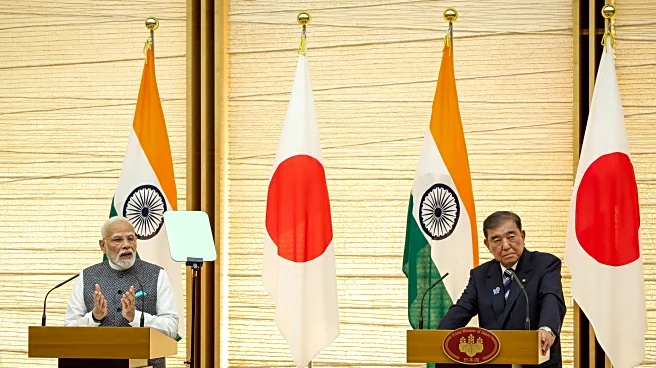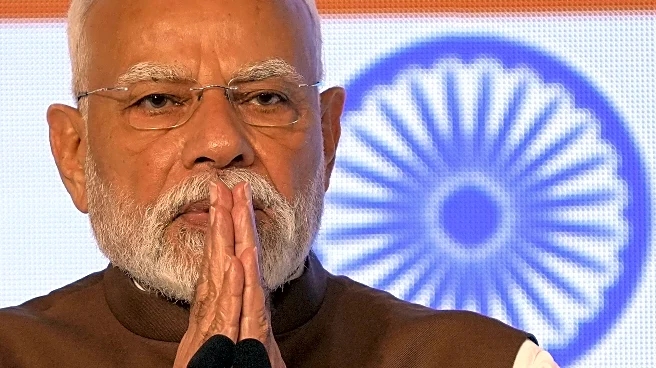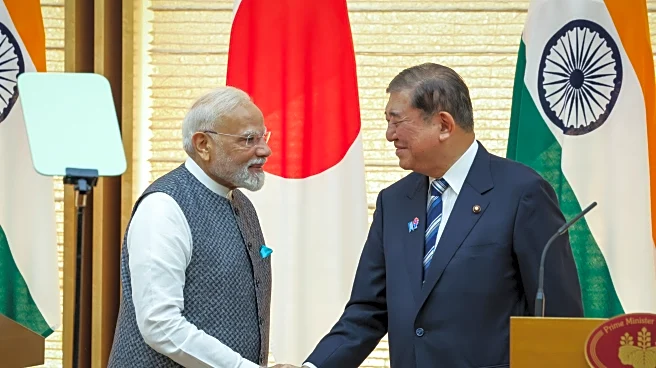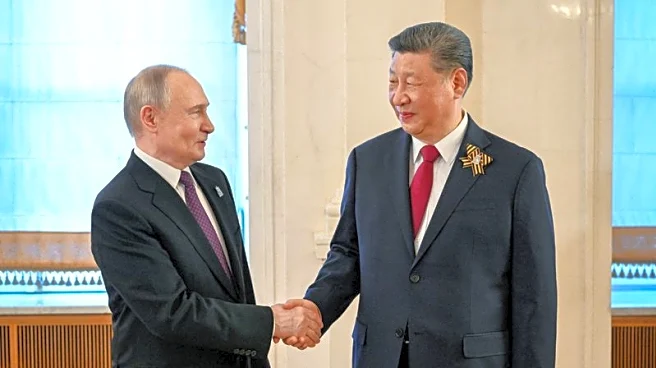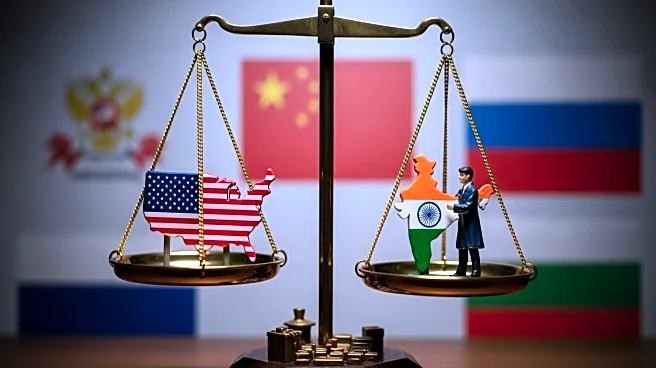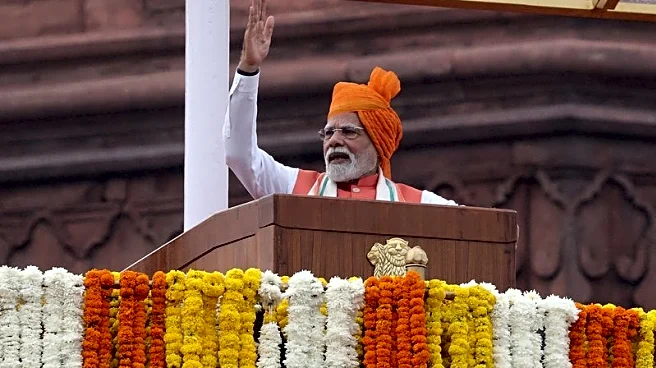What's Happening?
Japan is set to significantly increase its investment in India, aiming to channel $6.8 billion annually by 2030. This initiative seeks to leverage India's youthful workforce to address Japan's aging population and labor shortages. The decision was made during a summit between Indian Prime Minister Narendra Modi and Japanese Prime Minister Shigeru Ishiba in Tokyo. The leaders outlined a joint vision for strengthening economic and technological collaboration, marking a tripling of Japanese private investment in India from the previous decade's average. The collaboration includes plans for workforce and student exchanges, with a goal of facilitating half a million such exchanges over the next five years. The summit also resulted in the signing of 11 documents covering cooperation in sectors like security, defense, clean energy, technology, and space.
Why It's Important?
This alliance is crucial as it addresses significant demographic and economic challenges faced by Japan due to its aging population. By tapping into India's large and growing workforce, Japan can mitigate labor shortages and enhance its economic productivity. The partnership also strengthens geopolitical ties between the two nations, providing a counterbalance to China's growing influence in the region. Additionally, the collaboration could lead to advancements in critical industries such as batteries, robotics, semiconductors, and nuclear energy, potentially driving innovation and economic growth in both countries.
What's Next?
The partnership is expected to lead to increased joint ventures in various industries, fostering innovation and economic growth. Both countries will likely continue to develop their strategic relationship, focusing on shared geopolitical challenges and economic opportunities. The success of this alliance could encourage other nations to pursue similar collaborations, particularly in sectors like green energy and next-generation mobility.
Beyond the Headlines
The alliance highlights the importance of international cooperation in addressing demographic challenges and fostering economic growth. It also underscores the potential for technology and talent to drive significant advancements in various industries. The partnership may influence global economic dynamics, particularly in the context of shifting geopolitical power balances.



